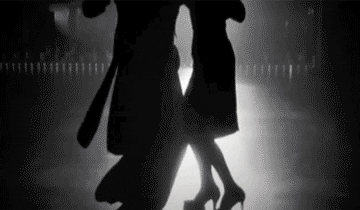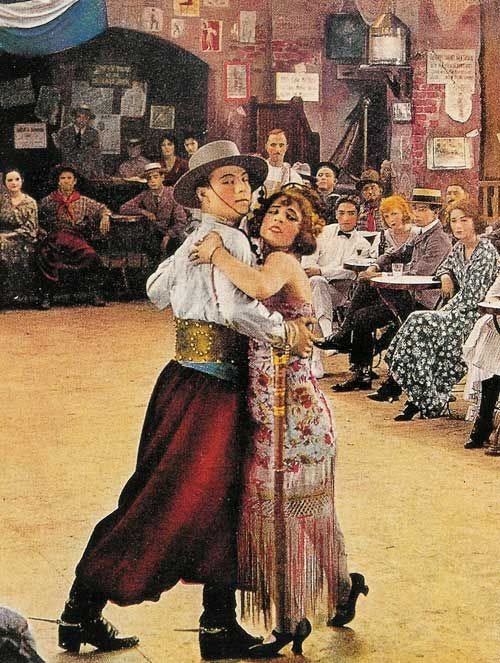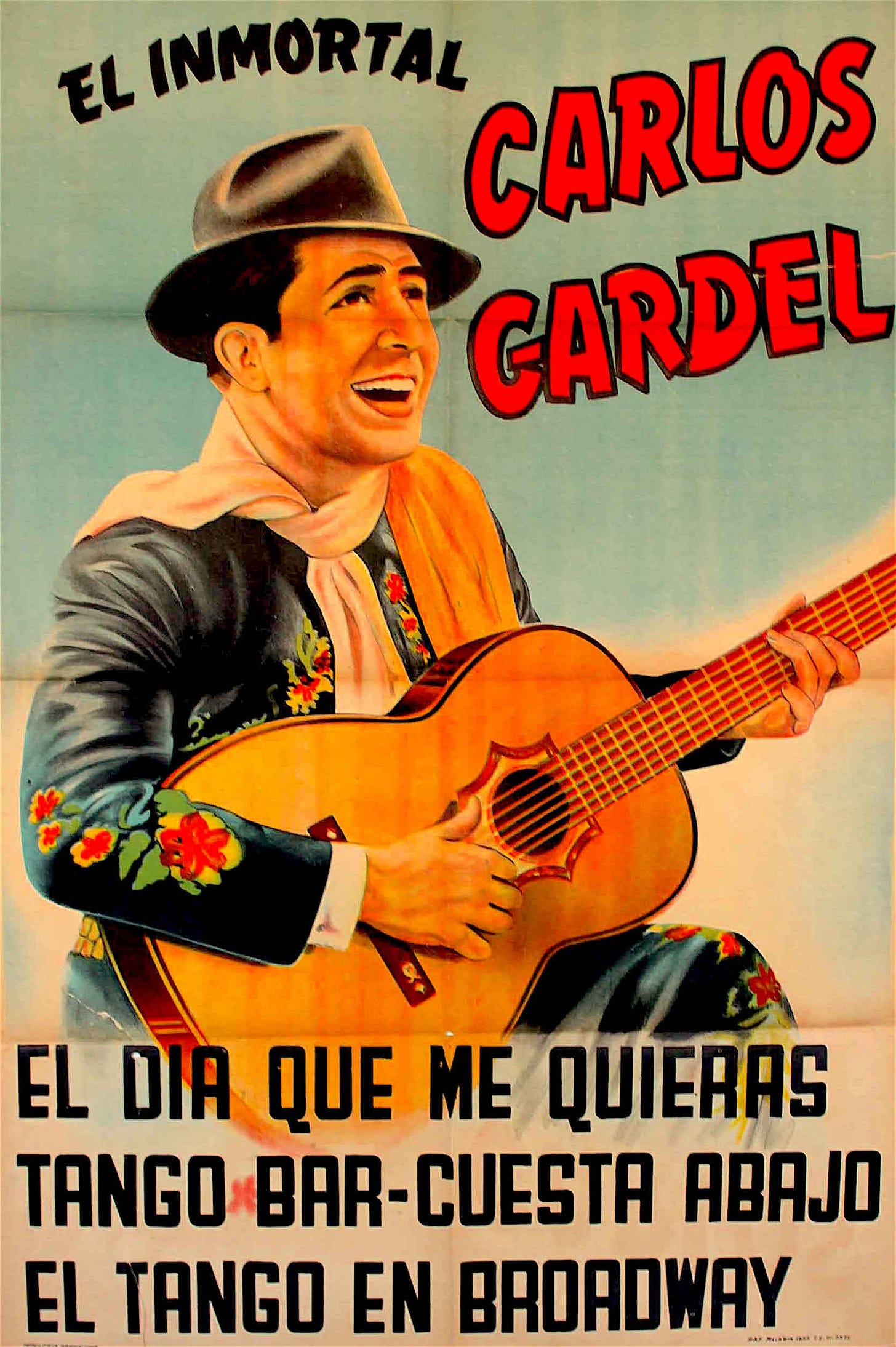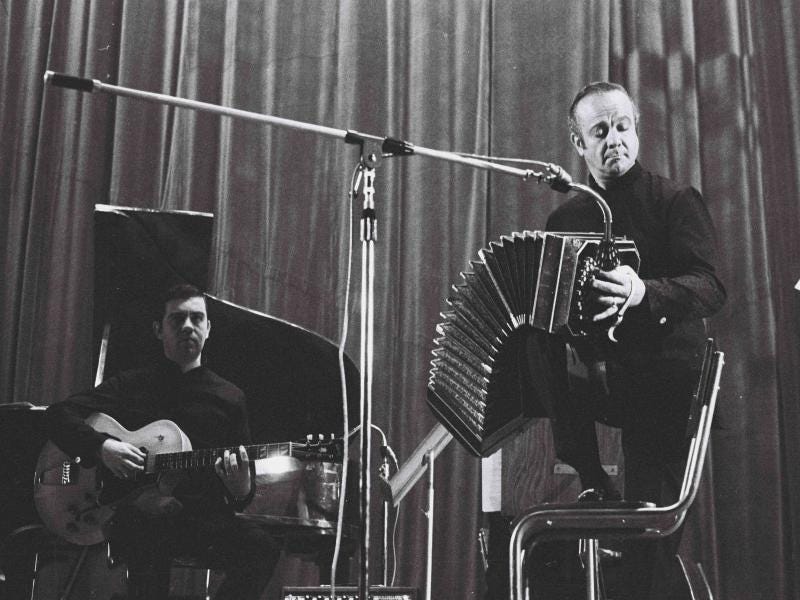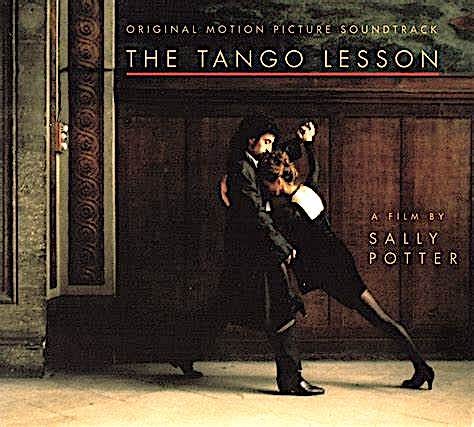BIRTHDAY TRIBUTE TO ASTOR PIAZZOLLA
When I listen to tango music, I am drawn into a vast and disconnected world, layered in comedy, heartache, profanity, reverence, romance, and tragedy. You can smell and taste it like fresh, velvety blood after a punch in the nose.
“The tango creates a murky, unreal past / that somehow becomes true, an impossible memory of having died / fighting, on a suburban street corner”— Jorge Luis Borges from his poem Tango.
Astor Piazzolla was the unlikely champion of tango, revisioning it despite itself. He led a life of artistic and personal liberty—the freedom to think outside of the box. Born lame, living trans-nationally as a constant immigrant, reared simultaneously in Catholic school and inner-city gangs, as one who loved Bach, Gershwin, and jazz as much as tango, Piazzolla became a soldier of artistry.
“I always thought there was someone in back of me in life, just pushing me. He is always telling me what to do.”— Piazzolla
To paraphrase Robert Fripp, tango is to Argentina what blues and jazz are to America. Like tango, blues and jazz came from shameful and ugly places in history. Yet blues and jazz have become indispensable treasures, able to communicate on many wavelengths. It is as though God, who made all things, can transform that which is debased and hideous into something glorious and beautiful
.
“Tango is a music of paradoxes…a porridge of African, European and indigenous cultures. Its quintessential instrument is the bandoneón, a button squeezebox invented in Germany as a poor man’s organ. It was created to play sacred music, but it flourished in the whorehouses of Buenos Aires…the dance might be understood as a macho ritual, but in the first step, the man backs down.”—from Fernando Gonzalez’ Introduction to Piazzolla’s memoir.
Tango dancers move like statues coming to life. The exaggerated stiffness, kicks, flicks and deliberate pauses of the dance are Afro-Argentine in origin. Tango music has roots in Cuba (the habanera), Argentinian vidalitas (sad songs), and Africa. Slaves brought cadombe rhythms and the tambor (an African drum). Some believe “tango” originally meant “a place where black people gather to dance.” In its primal years (1870-1910), tango was the music of the low class arrabales (suburbs of Buenos Aires), a blend of gaucho (Argentine cowboys) verse and lunfardo (Italian reverse slang) with Spanish music, Italian tarantellas, and German/Polish waltzes (later known as milangos).
“Tango is a hybrid of a hybrid people.”—Ernesto Sabat
o
Happy, frisky Afro-European folk dances became menacing in the vulgar hands of dirty, homesick men and treacherous prostitutes who’d as soon rob you as befriend you. The original tango dances were man-on-man, as there was a shortage of women. As more females entered the population, the dance became the personification of man and woman.
The dance is improvised rather than standardized, consisting of long walks and intertwined movements, usually in eight steps. A Buenos Aires tourist brochure states, “The man and woman glide across the floor as an exquisitely orchestrated duo with early flirtatious movements, giving way to dramatic leads and heartfelt turns. Depending on the music, the dance might proceed slowly and sensually, or with furious splendor.
”
“It is a dense lament that quickly turned into violently carnal words, in proclamations of imprecise desires.”—Horacio Vazquez-Rial
Early tangos were played on flute, guitar, violin, and piano. The old lyrics spoke of grift, novelty, sports, and the war between the sexes—men as brutes, women as animals. In Historia del Arrabal (1910), Manuel Galvez wrote, “it was a sensual, swinish, fringe music, mixing insolence and baseness, voluptuousness and toughness, secular sadness and the coarse happiness of brothels.”
“The tango is a sad thought that is danced,” said songwriter Enrique Santos Discepolo, who created the fictional Pipstrela, a slum girl who acts stupid so she could scam unsuspecting men. Yet she yearns for a rich boy to take her away.
“You gave me stormy weather / with just the shadow of your hand / across my face /
You gave me the cold, the distance, / the bitter midnight coffee / among empty tables /
It always started raining / in the middle of the movie, / and waiting amid the petals /
of the flower I brought you: a spider /…I was a tango lyric / to your indifferent tune”
—from MAYBE THE MOST BELOVED by Julio Cortezar (author of BLOW UP)
The tango lyric explores the mystery that separates man from woman. In the Tango de los Pistoleros episode of the cult-TV show, THE LONE GUNMEN, the dance became a metaphorical discourse on the universal battle between male and female. Jorge Luis Borges wrote, “The tango is a direct expression of something that poets have often tried to state in words: The belief that a fight may be a celebration.” It is not unlike the New Testament depiction of the bridegroom (Christ) who rescues the bride (the church).
Tango music moves and resounds like exotic birds crying out after flying astray into a big city. It’s no wonder that Piazzolla drew comparisons to Gershwin. Piazzolla meant Buenos Aires. Gershwin meant New York City.
“Tango shocked him, and yet despite himself he felt moved: it was the cry of his land, of his sad city.”—the painter Tomas in the novel Calles de Buenos Aires by Silvino Bullrich.
By 1900 (when Argentina was a larger world power than America), the Gran Aldea (Great Village) of Buenos Aires was becoming an immigrant city where frustrated and melancholy Europeans were displacing the rowdy, rustic gauchos. German sailors brought in the bandoneón. Children of this generation became the first porteños (people of a port city), and the tango cancion (tango song) became the new expression of urban experience, bittersweet nostalgia and unifying myths. It was the “get me out” voice of lost love and lost by the wayside.
“The tango is the grumble of Buenos Aires and its outsiders, its musical tribulations, its sentimental death-throe, its neurotic tremor, its sensual snore, its exclusive rainbow.”—Ramon Gomez de la Serna
Between 1890 and 1920, tango went through a laundering. It became art and entertainment for polite society. Hollywood and Paris became tango epicenters. Agents of these changes were singer-songwriter-actor Carlos Gardel and actor-dancer Rudolph Valentino. In silent film classic THE FOUR HORSEMEN OF THE APOCALYPSE, Valentino appeared with his little smile and gaucho hat, dancing in a mix of gypsy and Spanish flamenco.
By 1925 (the year of Gardel’s first European tour), Parisian fashion triumphed and tango became an international craze. Fans and musicians became known as tangueros.
The real hero is Gardel, El Zorzal Criollo, the songbird of Buenos Aires. America has Frank Sinatra. Latin America has Carlos Gardel. He is the icon of tango culture; the master of the tango cancion, with songs of depth and mystique that resonated with millions of people. Though born in France, Gardel epitomized the South American porteño. He was internationally successful as a radio and recording artist before he branched into movies. By no coincidence, a young Piazzolla appeared in a film with Gardel. His untimely demise in 1935 only contributed to the mythology of the era (in the Latin World, the magnitude of Gardel’s death would compare to the aftereffects of John Lennon’s death).
From the 1920’s until the early 1950s, it was The First Golden Age of Tango, with big bands led by Juan D’Arienzo (“the King of Rhythm”), Osvaldo Pugliese, and Anibal Troilo (names now spoken in reverence). Unfortunately, in the mid-50s, economic, political and social changes in Argentina (complicated by the Peron regime) brought a sharp decline in tango’s fortunes. Then Elvis Presley and The Beatles hit, seizing the minds of young Argentine musicians just like the rest of the world. Tango became the music of cartoons, old folks, and tourists.
Not for Piazzolla. Even in the 1940s, Piazzolla served notice that he’d be reworking the rules for tango. In the early 1950s, he went to Paris to study under renowned composition teacher Nadia Boulanger. He said he “wanted to be Stravinsky,” but Boulanger told him to seek the soul of the tango. One night in Paris, after hearing a concert by jazz saxophonist/composer Gerry Mulligan, Piazzolla had a revelation. He now had all the information to save tango from caricature, if not extinction.
“The tanguero is a strange animal.”—Piazzolla
Piazzolla retained tango’s poignancy and lyricism, but he rejected tango’s penchant towards sentimentality and morbid self-pity. He revised the language to include influences of Bartok, Debussy, Puccini, Ravel and Stravinsky, as well as jazz and pop/rock. He introduced complex harmonics, dissonances, and modalities. Like Miles Davis and Bob Dylan, Piazzolla enraged the purists. In doing so, he would barely draw an audience in his spiritual home of Buenos Aires. What was worse, Pizzolla had perfect tango credentials, having played with the legendary Troilo (originator of the perfect bandoneón method). Yet Piazzolla was an outsider who dared to play Bach and Mozart on the bandoneón,. Piazzolla’s big band gave solos to a cello, reeds, and other instruments that were unorthodox to tango traditionalists.
“He was considered a heretic.”—Horacio Ferrar, president of the Tango Academy in Buenos Aires.
Piazzolla did not sell many records in Argentina, but around the world he drew a loyal following. His music has been performed by the Assad Brothers, Emmanuel Ax, Daniel Barenboim, the Kronos Quartet and Yo-Yo Ma, not to mention orchestras and small groups. Piazzolla scored numerous films and intersected with Chick Corea, Miles Davis, Alberto Ginestera, and Lalo Schifrin.
During the 1980s, Piazzolla’s mission was aided, in part, by films and Broadway musicals that used tango as the theme. Today, Nuevo Tango has a substantial following in Europe and Japan (where there is a Second Golden Age; Japan and Scandanavia have whole tango subcultures). Groups like The Gotan Project mix tango with rock, soul and techno.
“Who sets the limits of artistic revolution?”—Piazzolla
It was the late 80s when I first heard Piazzolla, via his collaborations with jazz vibraphone prodigy Gary Burton. However, I assumed Piazzolla was just some oddball playing jazz on a squeeze box.
The turning point was THE TANGO LESSON, a 1997 film (now out of print) by Sally Potter, a filmmaker, dramatist, dancer-choreographer, writer and composer. She “started out trying to make a film about the joy of dance and ended up making a story about the complexity of love.” Potter (playing herself) discovers tango. She finds the reigning Prince of Tango Dancing, Pablo Veron (playing himself) in Paris. She offers to make him a movie star if he makes her a tango dancer. The centerpiece of the soundtrack was Piazzolla’s “Libertango.”
“…It was all first rate art…bohemian, confidential, delicate, porteno, rioplatense, universal…superfriend and supratanguero…that tango future so seductive and triumphant, sensed so many times…a creation immortal and luminous…like a star that has become substance in the sound of souls.”—Natalio Gorin, Piazzolla biographer
For me, “Libertango” is a soundtrack about discovery, exploration and pioneering your craft, be it music or something else. Tango music has forever changed my approach to composition and songwriting. The first time I heard “Libertango” and more essential Piazzolla compositions (“Adios Nonino,” “Oblivion,” “Resurrecion del Angel,” “Verano Porteno,” many more), it was like putting my finger into a still pool of water only to find out, once I lifted my head and looked, that it is not a pool, but a sea.
I have yet to take on covering a Piazzolla composition, but his influence can be heard in my song “It’s In Your Hands” (based on a melody by Erik Satie).
Meanwhile, HB to AP—thank you for challenging us with your gifts.
#piazzolla #astorpiazzolla #tango #nuevotango #libertango #birthday #johnnyjblair







